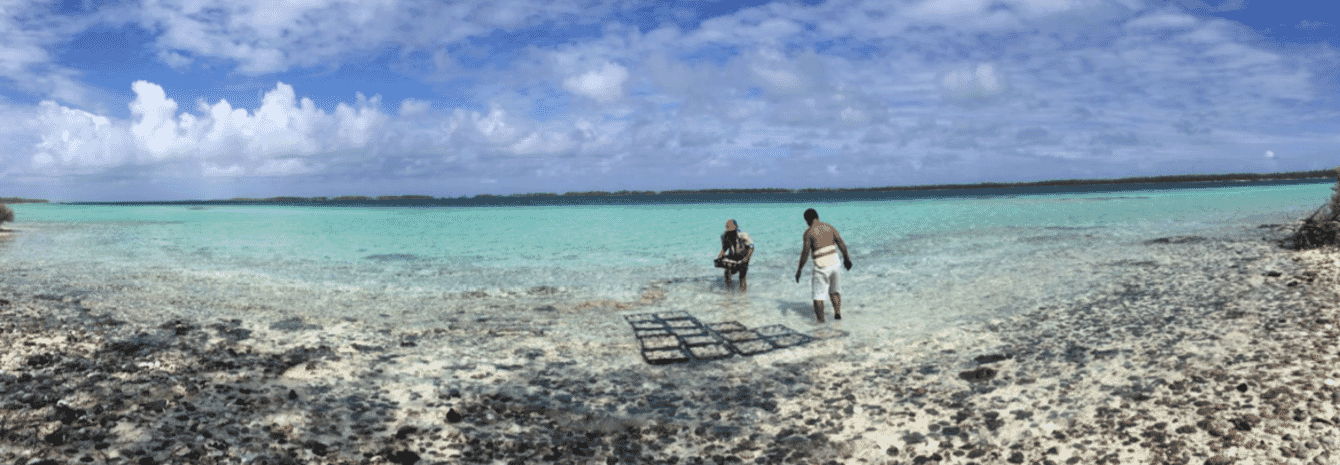The NGO is in the process of publishing a series of studies that examine how aquaculture initiatives can share conservation objectives with the community, while outlining critical issues that should be explored on a case-by-case basis. Three new case studies in the “IUCN worldwide catalogue of case studies on combined aquaculture and marine conservation” have been published this week, adding to the inaugural study, which was published last year.
Each of the four first reports explores a different type of marine aquaculture.
Tunisian fish farms
A study on offshore marine finfish cages In Monastir Bay, Tunisia, suggests that the 300 offshore marine finfish cages - producing bass, bream and meagre, inside the MPA are benefitting the whole social-ecological system. Through a participatory process, synergies between the MPA, the fish farming industry, the fishing sector and the tourism are explored.
“Sustainable fish cage culture and MPAs are both important to address the elements of the post-2020 global
biodiversity framework of the Convention on Biological Diversity as well as to meet the Sustainable Development Goals (SDGs) by 2030. Fish cage culture has impacts on local ecosystems but by looking for synergies and opportunities between aquaculture and marine conservation, solutions can be identified for making aquaculture sustainable and marine conservation efficient and to meet the need to reconcile nature conservation and sustainable development. This case study provides concrete illustrations of the value of joining efforts for conserving vulnerable and important habitats and supporting the local economy," writes François Simard from IUCN's Ecosystem-based Aquaculture Group.
Meanwhile, a study on the Derawan Islands, in Indonesia, looks into the establishment of shrimp farming in brackish water ponds in mangrove areas and MPAs. The authors of the study assert that small-scale, extensive, multi-species pond aquaculture helps to develop the local communities, without harming local mangroves, seagrass or coral.
“Mangrove ecosystems are key for many species and provide important ecosystem services. Pond aquaculture is a key activity for local communities in terms of sustainable development and food security. For meeting the Convention on Biological Diversity post-2020 global biodiversity framework as well as the Sustainable Development Goals (SDGs) by
2030, it is necessary to identify synergies and opportunities between marine conservation and sustainable local economic activities such as aquaculture. Small-scale, extensive, multi-species pond aquaculture is a relevant
and robust type of aquaculture for meeting the development needs of local communities while not hampering mangrove, seagrass bed and coral reef conservation efforts. MPAs are providing natural resources conservation and
support sustainable development," reflects Simard.

Culturing giant clams in the Marine Regulated Fishing Area of Reao Atoll, Tuamotu, French Polynesia © C Wabnitz
Giant clams and seaweed
A study on giant clam mariculture on Reao Atoll, in French Polynesia, is contributing to the protection and sustainable use of the MPA, as well as supporting local livelihoods, according to the authors.
Finally, a study on seaweed farming in MPAs off the islands of Zanzibar suggests that it has helped to empower women and has resulted in the abandonment of destructive fishing techniques.
According to IUCN, the rapid growth of the aquaculture sector has had a number of negative impacts: causing local pollution, disease outbreaks and coastal degradation in various parts of the world. There is, therefore, an urgent need to reconcile nature conservation and sustainable development in this growing sector.
However, the conservation organisation adds that: “aquaculture plays an important role in supplying healthy and nutritious food to a rapidly growing global population and has proven itself as a way to bring sustainable development for coastal communities. It plays a role in contributing to food security, poverty alleviation, socio-economic stability, and providing services to marine ecosystems in some cases”.
“In general, while the competition for space and resources is a source of potential conflicts for sectors such as tourism, aquaculture and fishers, ultimately all of them are dependent upon a healthy and well-managed ecosystem. These case studies identify multiple synergies between the sectors where collaboration has proven beneficial to all parties. They provide concrete illustrations of the value of joining efforts for conserving vulnerable species and the marine environment in general and supporting local economies.”
“These examples demonstrate how aquaculture can be part of MPA objectives while identifying issues and solutions,” said Dr Karen Kienberger, from IUCN’s Global Marine and Polar Programme, in a press release.




